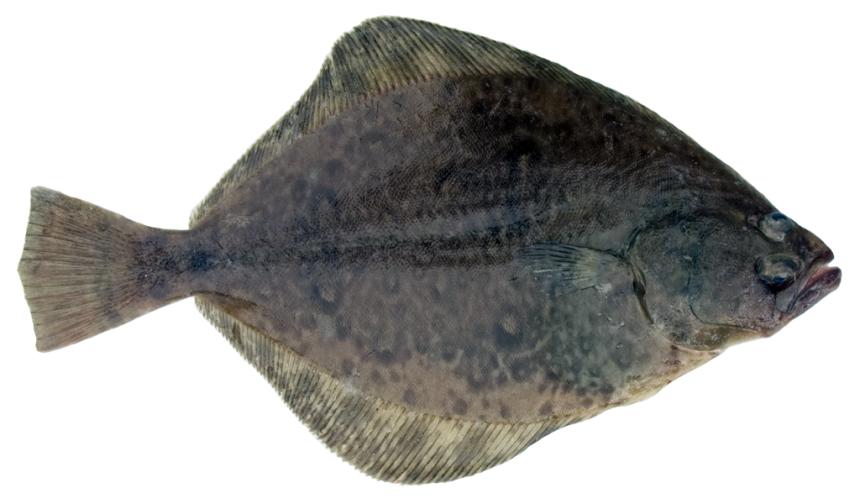Commonly caught off the Washington coast by commercial harvesters using otter-trawls and occasionally by longline gear. They are rarely caught by recreational harvesters within Puget Sound.
Description and Range
Physical description
A right-eyed sole with an oval to round body shape. The eyed side is uniformly light to dark brown; the blind side is white, sometimes with traces of pink. This species has a caudal fin that is longest in the middle and slightly indented near the edges. The lateral line has a low curve over the pectoral fin and no accessory dorsal branch. Petrale sole have a large mouth; the upper jaw has two rows of small, arrow-shaped teeth and the lower jaw has one row of teeth. There is a broad space between the medium sized eyes. The anal spine is strong.
This species is similar to Flathead sole which have only one row of teeth on the upper jaw and pores below and behind the eyes.
Petrale sole can grow up to 70 cm (28 in) in length and 3.6 kg (8 lbs) in weight. Maximum age is 35 years old.
Geographic range
Petrale sole range from the Bering Sea and Aleutian Islands through the Gulf of Alaska in the north to the Coronado Islands, northern Baja California in the south. It is most commonly found on sand and mud bottoms from 18 to 550 m (60-1,800 ft) in depth. It is most abundant at 55 to 128 m (180-420 ft) in depth from April through October and at 274 to 457 m (900-1,500 ft) in depth during the winter months.
State record
- Weight
- 7.57 lbs
- Angler
- John Stone
- Location
- Jefferson Head, Kitsap County
- Date Caught
- June 11, 1980
